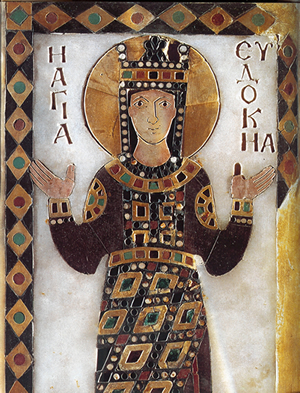San Pedro, Diego de. Cárcel de amor / The Prison of Love. Edited and translated by Laura Francis and Álvaro Garrote Pascual. Medieval Feminist Forum: A Journal of Gender and Sexuality 58, 3 (2023): 1-169. Available with a subscription on the Medieval Feminist Forum website. Issues are available freely online beginning two years after publication. Access to full text of recently published issues is by subscription only
 Woodcut frontispiece of Cárcel de amor, Zaragoza, 1493 and Burgos, 1496. Also used in the Catalan translation Carcer d'amor, Barcelona, 1493 (Source: Wikimedia Commons, Public domain)
Woodcut frontispiece of Cárcel de amor, Zaragoza, 1493 and Burgos, 1496. Also used in the Catalan translation Carcer d'amor, Barcelona, 1493 (Source: Wikimedia Commons, Public domain)
"At first glance, the plot of Cárcel de amor may seem like the most enticing aspect of the work. First printed in 1492, the text spins a tale rife with the paradoxes of unrequited love: a knight in a faraway land, named Leriano, falls hopelessly in love with a royal heiress to the throne, named Laureola, who does not return his affections. The two exchange letters of love and rejection, confront mounting suspicions in the court, spark a rebellion in order to save the lady from a corrupt trial, and end their correspondence in the lovesick death of the knight. Such a plot certainly revels in the melodramas that made the moralists of its time rail. And yet, the work does much more than tantalize readers with unfulfilled desires: the author, Diego de San Pedro, twists what often look like typical themes of courtly love in ways that greatly energized the so-called 'woman Question' across cultures in medieval and early modern Europe."— [Reproduced from the publisher's website]
 Indexers select a translation each month that is significant in the ideas it presents. This gives users an opportunity to see a range of newly translated medieval works of importance for women's and gender studies. It also will build an archive of references to translations that will be useful as classroom readings.
Indexers select a translation each month that is significant in the ideas it presents. This gives users an opportunity to see a range of newly translated medieval works of importance for women's and gender studies. It also will build an archive of references to translations that will be useful as classroom readings.
Depending upon the content, an entire work may be indexed as a single title like the vita of a saint or the collected cartularies of a countess. But in many cases the translation deals only in part with issues involving women and gender. In those instances, indexing goes to a deeper level, identifying and describing specific sections within a text. For example, there are 93 records for pertinent sections in the Siete Partidas.
To see more translations, go to the Advanced Search Page and put "Translation" in the Article Type box. Add specific terms to Keyword, Century or Geographical Area as needed.
There are currently over 3000 records for translations in Feminae. There are also over 500 records for editions in original languages.
Feminae welcomes unpublished translations and editions that authors may wish to make available.